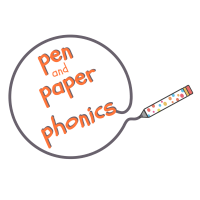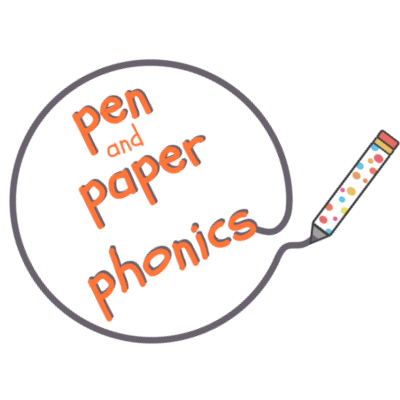Not got much time? Scroll down for the ‘Two Minute Version’ of this page.
What are sight words?
Sight words are words that learners recognize ‘on sight’.
They don’t need to sound them out because they can read them from memory.
When children or learners can recognize words by sight, their reading is a lot more fluent, as they don’t have to sound out every word.
Eventually, almost every word will be a sight word.
Phonics and Sight Words
Phonics teaches a learner to sound out words to read them. However, there are words that it is very useful for a learner to know by sight. This is because they are words that they will come across a lot, or because the words do not follow regular spelling patterns. Therefore, knowing them will improve fluency when reading.
For this reason, sight words are also called ‘high frequency words’. They are words that are often (frequently) used in English, or in story language.
Sight words are words that are common in English, that children are likely to come across a lot. Therefore, if they can learn them by sight, that’s great for their fluency and their progress in reading.
The purpose of sight words is not to memorize every word in the English language.
Learning every word by sight when you are first reading is difficult. It can mean that children are merely memorizing the book, rather than knowing the words. It also means that the learner’s reading is not very independent. This is because every time they don’t know a word they have to ask, rather than attempt to read it for themselves.
For that reason, I do not think that teaching someone to read by making them memorize words as a whole (often called the ‘look and say’ method) is the most effective way of teaching reading.
That being said, I have taught children who seem to be able to read purely by memorizing sight words. You tell them what a word is and then they know it for good. I think this is rare but if it’s the case, than that is great for the learner. Phonics is still an important skill for them to learn – to help them to spell – but the hurdle of reading has been an easy one for them.
Sight words are split up into two groups.
- ‘decodable’ words. These can be sounded out.
- ‘non-decodable’ words. These cannot be sounded out, they do not follow regular spelling rules.
Because the words ‘decodable’ and ‘non-decodable’ are jargon heavy and don’t really mean much to children, I follow the general rule of calling ‘decodable’ words ‘sound out-able’, and ‘non decodable’ words ‘tricky’.
It doesn’t really matter what they are called as long as the concept is clear to the child (One fun way is to call tricky words, ‘criminal’ words, as they break the rules). They need to know that some words can be sounded out and some words just need to be learned.
Decodable/ ‘sound out-able’ sight words
Decodable words are words that do follow regular spelling patterns. If the learner knows the ‘code’ to unlock reading (letter sound correspondence), they will be able to read the word.
‘Sound out-able’ words are words like ‘am’, ‘it’ and ‘can’.
The learner can be taught to sound out these words and blend them together to read the word (see Blending and Segmenting).
I think decodable words should always be taught first as a word to sound out, and then as a word to learn by sight. This gives children the independence to be able to work it out by themselves, without relying on an adult to feed them the answer.
*note:
The more decodable words that a child can read will depend on where they are in their phonics learning.
Some words that are technically decodable, can be taught as tricky words (see below). This is because the phonics knowledge needed to work out/decode the word are very complex, but the word is very common and therefore useful to learn.
For example, the word ‘look’ is very common. If a child knows that the sound /oo/ can say /oo/ as in ‘zoo’ as well as /u/ as in ‘book’, then this word is decodable. But, they are more likely to come across the word ‘look’ before they know these two rules. So, it is best to teach ‘look’ as a tricky word.
Another example is ‘like’. If the child has learned that the ‘e’ on then end of a word can alter the vowel sound so that ‘like’ is not pronounced ‘lick-ee’ but ‘like’ then they will be able to sound this out. However, it is more likely that they will come across the word ‘like’ in books, before they learn this particular phonics concept, so it is probably best just to learn it.
Non-Decodable/ ‘tricky’ sight words
Non-decodable words don’t follow the ‘code’ or rules of regular spelling patterns.
Therefore, they cannot be sounded out (unless a child had an amazing knowledge of the intricacies of bizarre spelling rules, which most young children don’t. To be honest, who does?!)
For example: the word ‘said’. If you sounded it out verbally you would say it has three sounds and those sounds are /s/ /e/ /d/.
But, it is spelled ‘s’ ‘a’ ‘i’ ‘d’. That is because in this word (and only a few others) the /e/ sound is written using ‘ai’. So it is probably better that the learner just learns the word ‘said’ by sight.
Other common examples are ‘the’, ‘you’, and ‘are’.
The best way to teach sight words
I think the best way to teach sight words is to tackle them in an order, and to differentiate between the tricky words and the sound out-able words.
Differentiate:
The best way I have come across is in Ruth Miskin’s books, where the tricky words are written in red.
So sound out-able words are written in black on flashcards, and tricky words are written in red.
Order:
At first when a child is ready to read, they will be able to sound out and blend orally, and they will be becoming confident in the sounds each letter makes.
They may then be ready to read words by sounding out the letters and blending.
When a child is at this stage, this is the order I follow:
- Words, written in black, such as ‘it’, ‘in’ and ‘am’ are introduced, (the sounds used in these words are sounds that child should be confident in).
- The child learns to sound these out and blend them and read them.
- The more a child reads them, they begin not to need to sound them out, and they can say them by sight.
- Alongside this, I introduce words written in red, such as ‘I’ or ‘to’. ‘I is a pretty easy one, especially if the learner knows the alphabet, but it is also a word that does not follow the rules (as ‘i’ on it’s own in a word should be sounded out, regardless of whether it is a capital or not).
- Another early word to introduce in red is ‘to’. It does not sound out properly, so it’s best just to learn it. ‘To’ is not the most common tricky word in English (Google tells me ‘the’ is), but it is quite a common word, and it is a little two letter word, so it’s a good place to start.
The order I use is based on different documents such as Letters and Sounds and the Fry Word Lists. I also select words based on how frequently a child comes across them in stories, as well as ‘easy wins’. An example of an ‘easy win’ would be ‘so’. It is not high up on the list of frequency, but it is little, and it rhymes with ‘go’ so sometimes (again depending on the learner) ‘so’ can be an easy one to learn.
My list is a working document, I keep slightly changing the order, and the order is flexible. If I come across a book that children like, and it has a sight word in it that I have not taught yet, I sometimes insert that word earlier up the list.
The Two Minute Version:
- Sight words are words that learners recognize ‘on sight’.
- Having sight words helps with fluency.
- Sight words are either decodable (they can be sounded out) or they are non-decodable (they do not follow the rules, and so cannot be sounded out).
- When teaching sight words, decodable and non-decodable words need to be differentiated, but can be taught alongside each other.
- Sight words need to be taught in a clear and logical order.

